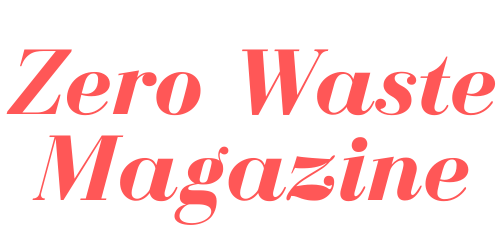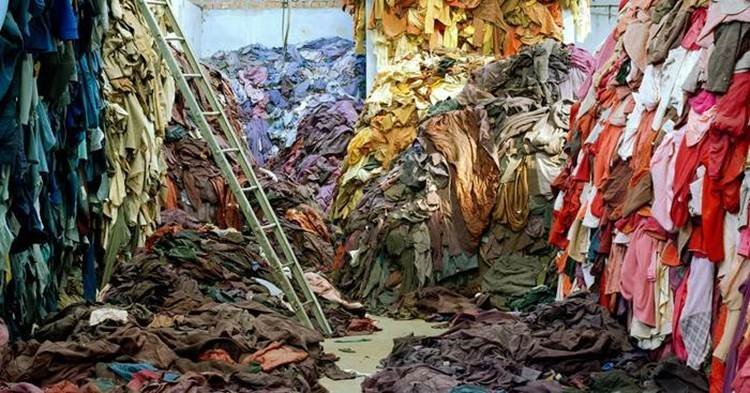Pollution, water usage, exploitation of raw materials, carbon footprint… These are terms that usually didn’t come up when talking about fashion, but all of these relate to the dangerous environmental impacts of the fashion industry. From high couture to cheap fast fashion, the textile industry plays a relevant role among the biggest polluters. Natural resources are exploited and used indiscriminately by corporations to elaborate masses amount of clothing.
For example, Cotton mass production uses lots of toxic pesticides that end up on soil, underground water, and cotton itself. Imagine the number of workers that are currently exposed to dangerous substances while picking up cotton. Then, cotton fibers are cleaned with chemicals since they’re not all white, as we are used to seeing. And that all sums up to a lot of harmful components and irresponsible labor conditions that affect humans and nature.
And synthetic fibers represent another menace. Polyester and other similar textiles get washed away from garments in tiny pieces that are not visible but go all into the ocean in huge quantities. And coastal pollution is already a noticeable problem, threatening marine species and coral reefs.
There’s a carbon footprint for fashion too. Textiles fabrication is one of the top biggest emitters, with aviation and international shipping sectors. Half of the textile production goes into fashion, counting millions of tons of greenhouse gases that are expulsed into our atmosphere, causing global warming and climate change.
When we calculate carbon footprint, we take into account all the processes involved in production. Which start at the very beginning of the supply chain, like land clearing for crops; then they follow into the transportation of raw materials. Transportation generally means hundreds and thousands of kilometers and maybe even across countries and oceans, international shipping, to get to a factory. Sometimes we can track this production into more than one factory before the transformation of these materials will result in a final product. Then these products will get to the stores and will be bought by costumers of every kind and at different prices, but they will all have a long contribution of gas emissions to our air.
Most of these factories are located in China, where the focus has to turn into monitoring efficiency on systems and equipment because of the environmental costs. In the middle of ecological crises, the efforts are on reducing the enormous amount of water used in their production and the concerns about polluted wastewaters.
That’s where water issues mainly appear in the fashion industry. Untreated wastewater is disposed of in local rivers and streams, affecting wildlife and communities living close to the factories nearby. Meaning that noxious substances contaminate drinking water and permanently impact ecosystem diversity.
And when we are discussing those environmental problems, we’re talking about an issue that has been prolonged through our modern history. Only in America, a nation driven by shopping and consumption, millions of dollars are spent on fashion annually. The average citizen is buying more than the double of clothing a year, than in previous decades. Retailers and brands are reproducing designs at a very low cost, under suspicious labor, and bringing products that aren’t made to last but to be replaced quickly. So if we could trace the next step of disposable fashion, we should go into landfills with the rest of the garbage because these business models are leaving people with too many clothes or unused ones.
It may not be Elon Musk or Bill Gates, but Amancio Ortega, Inditex owner responsible for the retailer empire of H&M, Zara, and others, is currently one of the wealthiest people on the planet. And accumulated his fortune on a business model that steals high fashion designs and makes massive amounts of much cheaper clothing items. On these stores, collections continue to add new pieces every week indiscriminately without controlling the negative impacts of overproducing.
And how many clothes are too much clothes? All garment products that are not sold, eventually get incinerated like a common waste. There is more production and fabrication than what is needed. Supported by marketing campaigns and social media. It’s a massive effect that doesn’t biodegrade easily, mainly because of the plastic components that are usually found in any textile nowadays. And other alternatives to fix this are not easy; it takes years to recycle that much material and donations just account for a percentage of the thrown-away clothes.
While ads are focusing on a social status referred to consumption, some green-washing campaigns try to trick people into thinking big fashion companies actually take action of wasted materials and sustainability. But that’s not very clear since most of their investment goes into producing more under the same methods.
THE ALTERNATIVES
Let’s not give up, fashion is a very harmful and big problem to humanity and the planet, but some ways could face it at a preset time.
Because the moment we’re buying a simple t-shirt, we’re not just buying a single product. Behind this seemly harmless article, there are many topics that involve ethics and sustainability. The corporate business needs to be redesigned, especially for fast and massive production; and governments can align measures along with international institutions on subjects like:
- – Banning and taxing textile waste. Becauseit can limit economic interests of corporations that make more money on producing and selling.
- – Reducing the use of toxic chemicals on every sector of the industry. To protect workers and the environment.
- – Compensations on affected communities and ecosystems.
- – Creating certifications of ethic and ecological responsibility for big brands and retailers.
- – Labeling products to specify their origins and proper production methods.
- – Financially motivating local businesses that have lesser carbon footprint in their process.
- – Educating and promoting responsible consumers through various incentives that actually work for normal people. Like discounts and special offers on public services.
- – Encouraging people to buy from second hand stores and educate them about the benefits.
We need to set a base for a better economy, in which workers are given proper conditions, and salaries don’t harm the environment and give consumers lasting quality.






